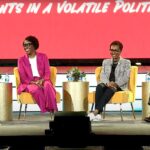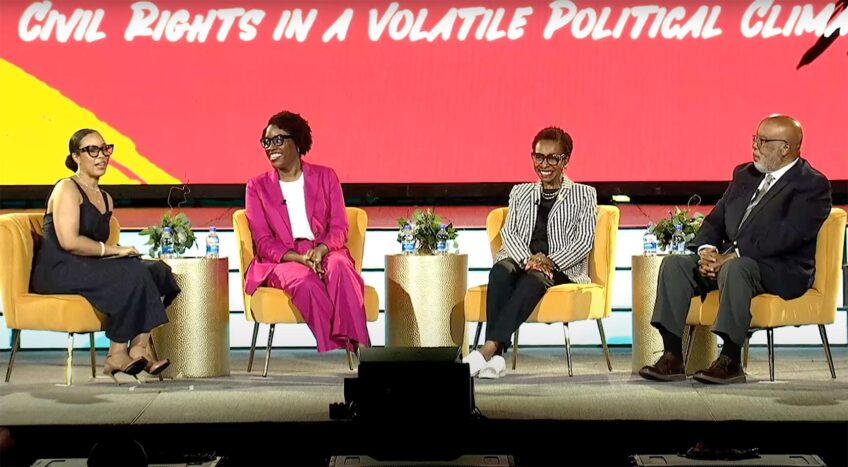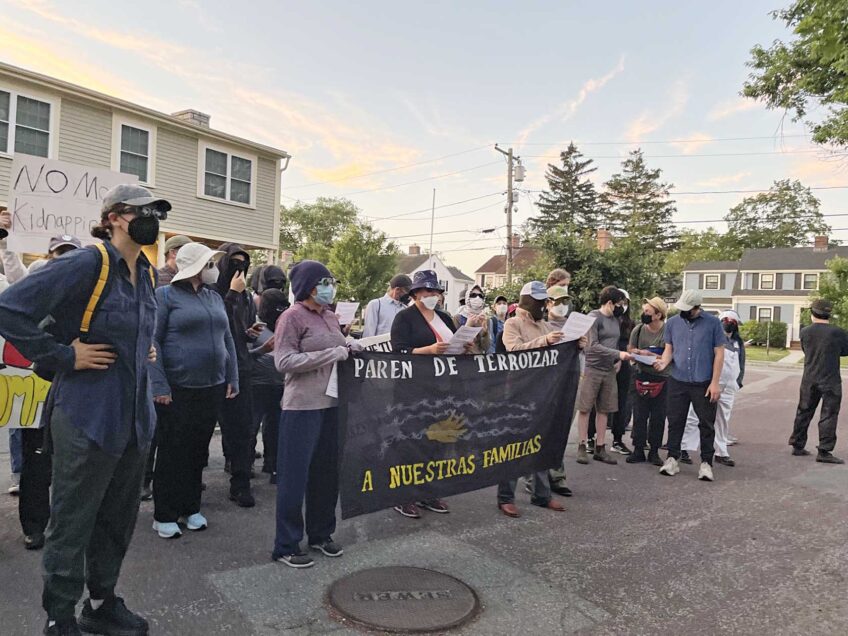
On July 5, 1852, Frederick Douglass spoke to a majority white audience in Rochester, N.Y. The great orator and abolitionist had been asked to deliver an address commemorating the Declaration of Independence, following a formal reading of the document that day.
What followed was a fiery speech, considered by some to be Douglass’ greatest, titled “What to the Slave is the Fourth of July?” In it, he expressed the unique disconnect from the notion of American independence that he felt as a former slave, as well as his determination to achieve such freedom for African Americas in the United States.
Douglass’ words still resonate 157 years later. That much was proven during a recent reading of the speech that brought elected officials and citizens from across the state — including New Bedford, the site of Douglass’ former home — to Boston Common to consider the historical importance of the address in an America perhaps unimaginable to Douglass: one led by a black president.
“This event is a chance to talk about what Douglass’ July 5th speech means today, in a post-Obama world,” said David Harris, managing director of the Charles Hamilton Houston Institute for Race and Justice at Harvard Law School, which sponsored the June 2 event with Community Change Inc. and Mass Humanities.
The reading continued a recent increase of attention on Douglass in the Commonwealth. Back in February, Gov. Deval Patrick issued a proclamation establishing in Massachusetts days to honor both Frederick Douglass and Susan B. Anthony, who were longtime friends and leaders in the abolition and women’s suffrage movements.
According to historical records, Douglass’ first owner recorded his birth as coming in the year 1818, but the exact calendar date was unknown. His mother often referred to him as “my little valentine,” and later in life he accepted Feb. 14, Valentine’s Day, as his birthday. For that reason, Frederick Douglass Day will be observed on Feb. 14, while Susan B. Anthony Day will be held on Feb. 15, her birthday.
Ronald Marlow is the assistant secretary for access and opportunity in the state Executive Office for Administration and Finance. He was involved in the issuing of the proclamations honoring Douglass and Anthony, as well as the commemoration recognizing June 19, 1865, or “Juneteenth,” as the day that recognizes the emancipation of the last remaining slaves in the United States, and other civil rights-related issues.
Douglass was concerned with questions emanating from slavery, according to Marlow — how all Americans, regardless of their past status, could make true the words of the Declaration of Independence, and whether or not citizens were living up to the document’s lofty words. Issues, Marlow added, that remain relevant today.
“The proclamation serves as a vehicle for the public to take notice,” he said. “Anytime there is a focus on historical figures, there is time for reflection and a time for people to think back on where we’ve been, where we are, and where we need to go.”
Bridging the gap between past and present was one of several goals of the June 2 event.
After opening remarks by the Houston Institute’s Harris that referenced U.S. Attorney General Eric Holder’s charge for Americans to have open conversations about race, anxious participants gathered for the reading in the shadows of the Common’s bronze relief sculpture commemorating Robert Gould Shaw and the 54th Massachusetts Volunteer Infantry Regiment. (Douglass himself recruited soldiers for the 54th, the first all-black regiment to fight for the Union in the Civil War — including two of his own sons.)
Paragraph by paragraph, a long line of enthusiastic residents read a truncated, 7,000-word version of Douglass’ famous speech, giving voice to the distance he felt from the freedoms granted to Americans through the Declaration of Independence and the day devoted to its celebration.
In 1852, Douglass spoke to the all-white audience about how the wounds of racism and slavery afflicted African Americans in the United States, and about his opposition to the controversial Fugitive Slave Act of 1850, under which people suspected of being runaway slaves could be arrested without warrants or due process, and turned over to their alleged owners based on nothing more than a statement claiming ownership.
Though Douglass credited the nation’s Founding Fathers and urged his audience to “cling to this day and to its principles,” he did so without claiming membership in the country — referring to the Founding Fathers as “your Fathers” and to the United States as “your nation” — while continuing to depict the horrors of slavery.
Mass Humanities and other contributing organizations offered assistance to those interested in bringing Douglass’ words back home, pledging help in organizing events like local barbecues, town meeting or even gatherings of family and friends.
An integral part of spreading the information about Douglass’ influence is getting the next generation involved. Three students from New Bedford — Jarris Ashley, age 12, Manuel Sequeira, 11, and Ariana Sequiera, 16 — each presented their own speeches about what Douglass means in their lives.
“Some people may not have heard of you, but to me you mean a lot, and I want them to know about you,” said Ariana, whose letter to Douglass noted his presence in the fight for the rights of both African Americans and women.
As July 4 nears and more attention is paid to Douglass’ speech, connections between the abolitionist and the first black president will become clearer, according to John Stauffer, a professor of English, African and African American studies at Harvard University.
“Both are two of the great self-made men in American history … both are among the greatest orators of their generation and seen as immensely handsome, even by opponents,” said Stauffer, whose latest book, “Giants: The Parallel Lives of Frederick Douglass and Abraham Lincoln,” was released in November.
The book argues that Douglass was as important to the growth of America as Lincoln and that, without Douglass and John Brown, “Lincoln probably wouldn’t have been elected president,” Stauffer said.
“Both [Douglass and Obama] are superb, elegant and eloquent writers; both are descendents of mixed-race parentage; both became famous before age 40 on the strength of their autobiographies,” he added.
In “Giants,” Stauffer puts the importance of Douglass’ skills as an orator into context by explaining that great speakers of that time were as well-known and respected as athletes and movie stars are today — another link between the two magnetic speakers.
“Obama has learned from Douglass that, to paraphrase Douglass, true art breaks down racial barriers,” Stauffer said. “Douglass spoke before thousands of whites on countless occasions, and he knew when he went on stage to speak that most of his listeners in theory believed that blacks were subhuman. … His voice was like music, he kept audiences on the edge of their seats with his powerful performances, and on countless occasions, Douglass converted the multitude of whites to the cause of antislavery or abolitionism.
“Similarly with Obama, there were countless times when whites, before hearing and experiencing Obama’s magic, said, ‘I won’t vote for a black man,’ but then they’d see his beauty, hear his eloquence, and be converted and vote for him.”






